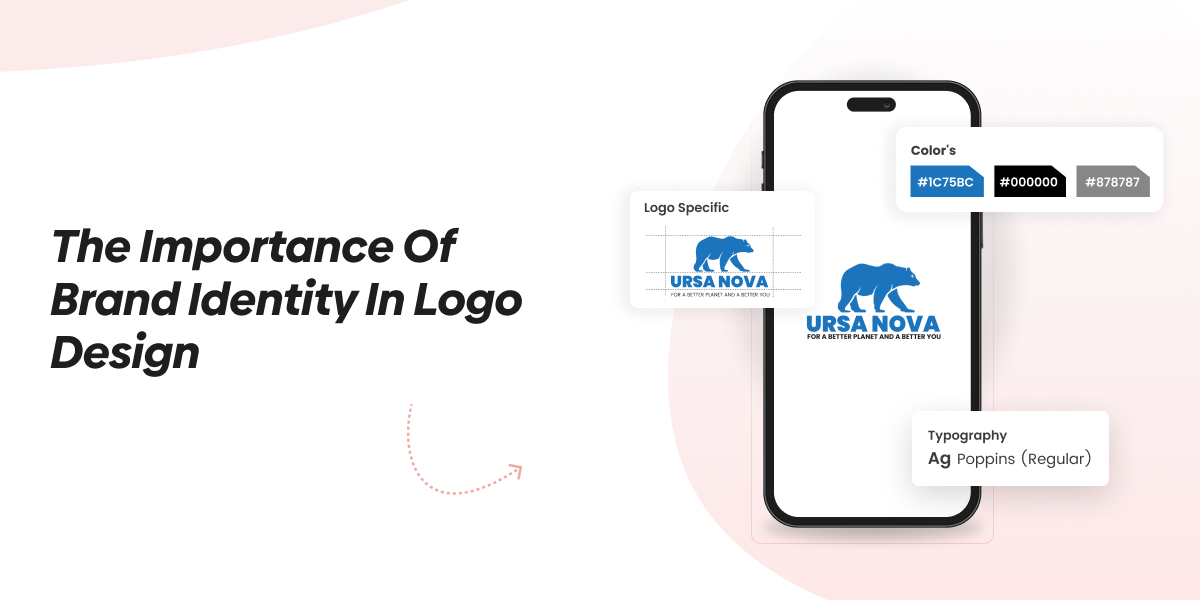The Importance of Brand Identity in Logo Design

When it comes to creating a memorable and effective brand presence, the importance of brand identity in logo design cannot be overstated.
A professional logo design serves as the cornerstone of your brand’s visual identity, making a lasting impression on potential customers. For startups and small businesses, investing in custom logo design is crucial, as it helps establish a unique and recognizable brand image from the outset.
Whether you're a new venture looking to stand out or an established company in need of a refresh, understanding how to incorporate brand identity into your logo design is essential for success.
This approach not only ensures that your logo resonates with your target audience but also strengthens your overall brand strategy. Hence read the following article till the end to know more.
Comprehending Brand Identity
The set of components a business utilizes to convey its image and core values to the public is known as its brand identity. This covers the general visual style, typeface, color scheme, and logo.
Customers are more likely to recognize and remain loyal to a firm that has a strong brand identity compared to its rivals.
Important Elements of Brand Identity
1. Logo
A brand's logo is frequently its most identifiable component. It acts as a visual acronym for the mission and values of the business. A well-designed logo need to be recognizable, adaptable, and appropriate for the identity of the company.
2. Color Palette
Hues elicit feelings and connections. Green, for example, is frequently associated with sustainability, whereas blue might imply professionalism and trust. Brand identification is strengthened when colors are used consistently in all branding materials.
3. Typography
A brand's personality may be shown by the typefaces it chooses. While a traditional serif typeface might convey heritage and dependability, a contemporary sans-serif font could suggest innovation.
4. Visual Elements
In addition to adding extra levels of meaning and identification, icons, patterns, and artwork help support brand identity.
How Logo Design Affects Brand Identity
1. Initial Impression Counts
Usually, a potential customer's initial engagement with a brand is through its logo. A strong logo may provide a good first impression by projecting professionalism and excellence. On the other hand, a badly designed logo can cause doubt and erode consumer confidence in the company.
2. Uniformity Throughout Platforms
Consistency across several channels, including print materials, social media, and websites, is ensured by a robust brand identity. Customers will find it simpler to recognize a brand no matter where they see it if it has a consistent visual identity, which helps to promote brand identification. Over time, familiarity and trust are increased by this regularity.
3. Setting Oneself Apart from Rivals
A unique logo makes a brand stand out in a crowded market. A logo may convey the distinctive qualities that set a business apart from its rivals by combining distinctive graphic elements that capture the essence of the company. Making this distinction is essential to drawing in and keeping clients.
4. Emotional Bond
Because they may arouse connections and feelings, logos are effective instruments for increasing brand loyalty. Customers may be persuaded to pick a brand above competitors by an effective logo that strikes a chord with the target market.
5. Flexibility and Scalability
A well-designed logo has to be flexible and expandable for a range of uses, including billboards and business cards. This adaptability is crucial for preserving brand identification across many formats and media, guaranteeing the logo's continued effectiveness.
The Method of Designing a Logo with a View to Brand Identity
1. Analysis and Planning
It's critical to perform in-depth research to comprehend the brand's values, target market, and competitive environment prior to developing a logo. This methodical technique guarantees that the logo conveys its message and is consistent with the business identity.
2. Idea Generation
Multiple logo concepts that capture the essence of the brand should be produced by designers. During this stage, concepts are generated, designs are sketched, and many visual directions are explored.
3. Input and Improvement
It's critical to get input from stakeholders and prospective clients after the first thoughts are established. By incorporating this feedback, the design may be improved to better appeal to the intended demographic.
4. Conclusion and Recommendations
The next step after choosing the final logo design is to create a brand style guide. The usage of the logo and other brand components is outlined in this document to guarantee uniformity in all upcoming apps.
It is impossible to exaggerate the significance of brand identification in logo design. An effective logo embodies a company's ideals and encourages consumer awareness and loyalty. It is a potent symbol of the brand.
Through a thorough grasp of brand identity and its integration into the logo design process, businesses may establish a memorable image that distinguishes them in a crowded market.
Investing in a professional logo design means laying a solid basis for a brand's future success rather than merely focusing on looks.
Conclusion
In conclusion, brand identity is fundamentally linked to the success of logo design, making it a vital consideration for any business. A professional logo design is more than just an aesthetic element; it's a strategic tool that encapsulates your brand’s values, personality, and mission.
For startups and small businesses, investing in custom logo design is an invaluable step toward building a distinctive and memorable brand image.
Whether you are launching a new business or rebranding an existing one, a thoughtfully crafted logo can significantly impact your market presence and customer perception.
Ultimately, the right logo design not only enhances your brand’s visibility but also fosters a deeper connection with your audience, ensuring long-term success and recognition.

